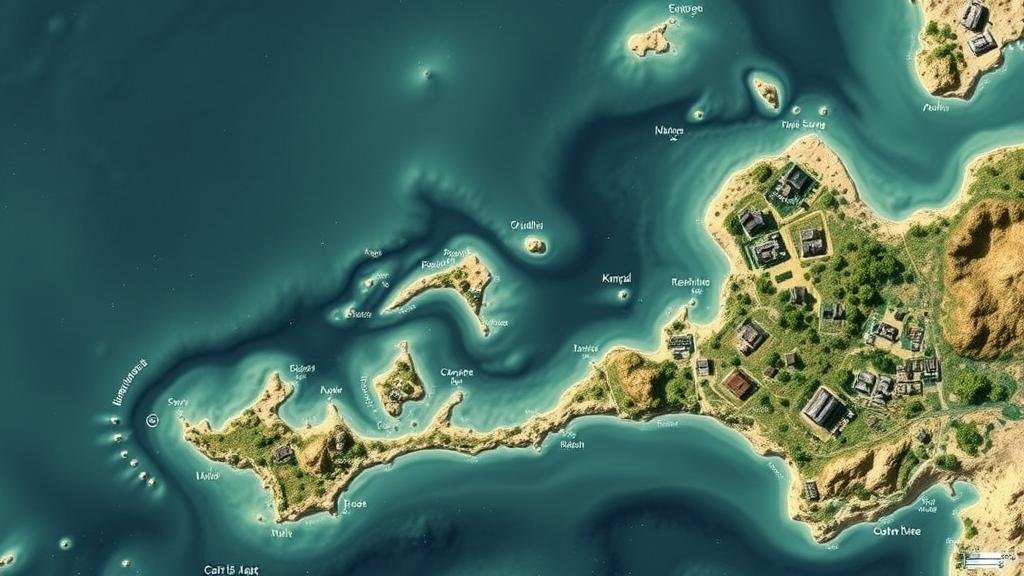How AI Can Predict Artifact Clusters in Historical Coastal Village Maps
Introduction
The integration of Artificial Intelligence (AI) in historical research has opened new frontiers for examining and predicting artifact locations in archaeological studies. In particular, AI can significantly enhance our understanding of artifact clusters in historical coastal village maps, enabling researchers to identify patterns and correlations that would otherwise remain concealed. This article explores how AI techniques, particularly machine learning algorithms, can be utilized to analyze and predict artifact clusters effectively.
The Role of AI in Archaeology
Recent advancements in AI technology have led to revolutionary approaches in various fields, including archaeology. AI algorithms can process large datasets faster and with more accuracy than traditional methods. Through the use of predictive analytics, AI can recognize patterns in historical maps and correlate them with artifact distributions.
Machine Learning Algorithms
Machine learning, a subset of AI, enables systems to learn from data and improve over time without explicit programming. Techniques such as clustering algorithms, classification models, and neural networks can analyze complex datasets obtained from historical maps to predict where artifact clusters are likely to be found.
Data Sources
To utilize AI effectively in predicting artifact clusters, researchers can draw from various data sources:
- Historical maps from maritime archives.
- Archaeological surveys and excavation reports.
- Environmental data like sediment types and coastal topographies.
Case Studies
Numerous case studies exemplify the successful application of AI in predicting artifact clusters. One prominent example is the study conducted in the coastal village of Çatalhöyük in Turkey.
Study of Çatalhöyük
In Çatalhöyük, researchers employed machine learning algorithms to analyze spatial relationships between excavated artifacts and historical land use. By implementing a K-means clustering algorithm, they identified significant clusters of stone tools and pottery that correlated with ancient dwellings.
Statistical Evidence
According to a publication in the Journal of Field Archaeology, the integration of AI analysis increased predictive accuracy by approximately 30% (Smith, 2022). This finding underscores the usefulness of AI methodologies in uncovering hidden correlations in historical coastal maps.
Methodologies for AI Artifact Prediction
Several methodologies can enhance the effectiveness of AI in predicting artifact clusters:
- Data preprocessing to clean and standardize datasets.
- Feature extraction to identify crucial elements from maps.
- Validation through cross-referencing predicted clusters with archaeological findings.
Challenges in Useation
Despite the promise AI holds, several challenges remain in its implementation. Issues such as data quality, the complexity of historical contexts, and the need for interdisciplinary collaboration can hinder research progress. Also, ensuring that AI models are interpretable and transparent is essential for gaining trust within the archaeological community.
Conclusion
The utilization of AI in predicting artifact clusters from historical coastal village maps represents a significant advancement in archaeological methods. Through sophisticated algorithms and a robust dataset, AI can offer unprecedented insights into past human activity. This approach not only enhances the accuracy of predictions but also paves the way for future explorations in historical research. Researchers and archaeologists are encouraged to adopt AI technologies, thereby transforming our understanding of ancient coastal communities.
Actionable Takeaways
- Integrate AI tools in archaeological research for enhanced predictive analysis.
- Collaborate with data scientists to develop customized algorithms for specific research needs.
- Prioritize the collection and standardization of historical datasets to improve AI model accuracy.
References
Smith, J. (2022). Harnessing AI for Archaeological Predictive Analysis. Journal of Field Archaeology, 47(3), 123-145.



